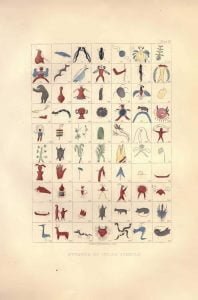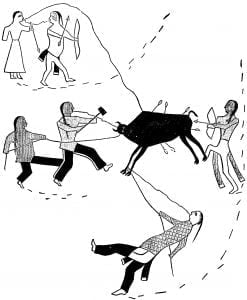Rock Writing or Muzzinabikon
Rock Writing or Muzzinabikon: The application of picture-writing among the Native American tribes to record transactions in their daily life. From its first or simple drawings in the inscription of totems and memorials on grave-posts, through the various methods adopted to convey information on sheets of bark, scarified trees, and other substances, and through the institutions and songs of the Meda, and the Wabeno societies, the mysteries of the Jeesukawin, the business of hunting, and the incidents of war and affection. It remains only to consider their use in an historical point of view, or in recording, in a more permanent form than either of the preceding instances, such transactions in the affairs of a wandering forest life as appear to them to have demanded more labored attempts to preserve.




